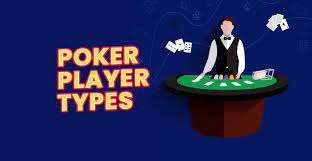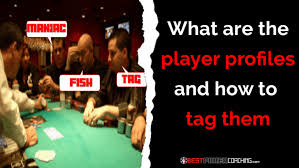What Is Poker Theory?
Home » Understanding Poker Theory
Poker theory refers to the set of principles, strategies, and concepts players use to understand and approach the game of poker. It encompasses both mathematical and psychological aspects of the game. Here are some key components of poker theory:
- Mathematical Foundations: Poker involves a lot of mathematics, including probability, expected value (EV), pot odds, implied odds, and equity calculations. Understanding these concepts helps players make better decisions based on the likelihood of winning a hand versus the potential payoff.
- Game Theory: Game theory studies strategic decision-making in competitive situations. In poker, game theory involves understanding optimal strategies for different situations, considering player tendencies, stack sizes, position, and bet sizing.
- Positional Play: Position is crucial in poker. Players acting later in a hand have more information than those acting earlier, so they can make better decisions. Poker theory emphasizes exploiting positional advantage and adjusting strategies based on position.
- Hand Ranges: Rather than focusing solely on individual hands, poker theory emphasizes the range of hands that opponents could have based on their actions. Players need to consider what hands their opponents are likely to have and how their hand compares.
- Bluffing and Deception: Poker theory involves understanding when and how to bluff effectively. Bluffing is essential in poker, but it is vital to balance bluffs with value bets and consider opponent tendencies when deciding whether to bluff.
- Bet Sizing: The size of bets and raises is crucial in poker theory. Bet sizing affects pot odds and implied odds and can be used to manipulate opponents’ decisions. Understanding how to size bets for value, to protect a hand, or to bluff is essential.
- Exploitative Play: Poker theory includes adjusting your strategy based on opponents’ tendencies. Exploitative play involves identifying weaknesses in opponents’ games and adjusting your strategy to exploit those weaknesses.
- Game Formats: Different poker variants (like Texas Hold’em, Omaha, Stud, etc.) have nuances, and poker theory can vary slightly depending on the game format. Strategies that work in one variant may not work as well in another.
- Psychology and Player Reads: Understanding psychology and reading opponents is a significant part of poker theory. Recognizing betting patterns, tendencies, and tells can help players make better decisions.
- Bankroll Management: While not directly part of in-game strategy, poker theory also includes concepts of bankroll management, which is crucial for long-term success in poker.
Poker theory is not a static set of rules but a framework that evolves as the game changes and players develop new strategies. It’s about understanding fundamental principles and applying them dynamically to make profitable decisions in various situations.

Poker Theory – Emotions & Feelings
Poker theory acknowledges that emotions and feelings play a significant role in the game, but it generally advises players to manage and minimize their impact on decision-making. Here are some key points from poker theory regarding emotions and feelings:
- Emotional Control: One of poker theory’s fundamental principles is maintaining emotional control at the table. Emotions like tilt (frustration or anger) can lead to poor decision-making costly mistakes. Professional players often emphasize the importance of staying calm and focused regardless of wins or losses.
- Decision Making: Rational decision-making is essential in poker. Emotions such as fear, greed, or overconfidence can cloud judgment and lead to suboptimal plays. Theory suggests making decisions based on logic, probability, and game theory rather than emotions.
- Bankroll Management: Emotions like greed or desperation can lead players to play stakes they can’t afford or take unnecessary risks. Poker theory emphasizes the importance of proper bankroll management to reduce the emotional impact of wins and losses.
- Observation of Opponents: Understanding and exploiting opponents’ emotions is part of poker strategy. Observing opponents for signs of weakness or strength, such as betting patterns or body language, can be valuable. However, it’s important not to let your emotions interfere with your reading.
- Tilt Management: Tilt is a state of emotional frustration or confusion that leads to poor play. Poker theory advises recognizing when you’re on tilt and taking steps to manage it, such as taking a break, refocusing, or quitting the session if necessary.
- Mindset and Confidence: Maintaining a positive mindset and confidence is essential for long-term success. However, this shouldn’t translate into overconfidence or arrogance, which can blind players to their mistakes.
- Variance Awareness: Poker theory teaches players to understand variance—the natural fluctuations in luck that occur in the short term. Awareness of variance helps players cope with winning and losing streaks without becoming overly emotional.
- Focus on Decision Quality: Instead of focusing on short-term results, poker theory advocates focusing on the quality of decisions. Even if a good decision leads to a loss in the short term due to bad luck, it’s still the right decision in the long run.
In essence, poker theory recognizes that emotions are inevitable but advises players to control them as much as possible to make optimal decisions and maximize long-term profitability.
Poker Theory & Poker Player Profiles:
In poker theory, a player’s profile is a critical component that significantly influences strategy and decision-making. Here are some key aspects of how a player’s profile factors into poker theory.
Players can often be categorized into different types based on their playing style. Common categories include:
- Tight-Aggressive (TAG): Plays few hands, but bets and raises aggressively when involved in a hand.
- Loose-Aggressive (LAG): Plays many hands and gets/raises aggressively.
- Tight-Passive (TP): Plays a few hands and bets cautiously. These players will rarely raise.
- Loose-Passive (LP): Plays many hands and bets cautiously. They will often see the flop, and then fold.
Understanding these types of players can help you predict their behavior and adjust your strategy accordingly. For example, against tight players you may can bluff more often, as they are likely to fold if they don’t hold a premium hand. When playing against loose players, you can value bet more frequently, as they will likely call with weaker holdings.


Player Profiling
Poker theory encompasses a complex set of strategies and principles that guide decision-making at the table. Central to this theory is the concept of player profiling, which involves categorizing opponents based on their playing styles and tendencies. Common player types include Tight-Aggressive (TAG), Loose-Aggressive (LAG), Tight-Passive (TP), and Loose-Passive (LP). By identifying these profiles, players can better predict opponents’ behaviors and adjust their strategies accordingly.
Exploiting these tendencies is crucial; for instance, bluffing more against tight players and value betting against loose ones can increase a player’s edge. Profiling is dynamic, necessitating continuous observation and adaptation to shifts in opponents’ strategies or emotional states. This also aids in estimating opponents’ hand ranges and understanding their psychological inclinations, such as risk tolerance.
Player profiling significantly influences both exploitative and Game Theory Optimal (GTO) play. While GTO focuses on balanced strategies to minimize exploitability, exploitative play leverages specific insights from player profiles to maximize expected value (EV). Additionally, a player’s own table image, shaped by their profile, plays a strategic role in manipulating opponents’ perceptions and actions.
In essence, integrating player profiles into poker theory enriches strategic depth, allowing for more informed and effective decision-making to outmaneuver opponents and achieve long-term success in the game.
Connect with Us!
Never Miss Our Weekly Newsletter!
